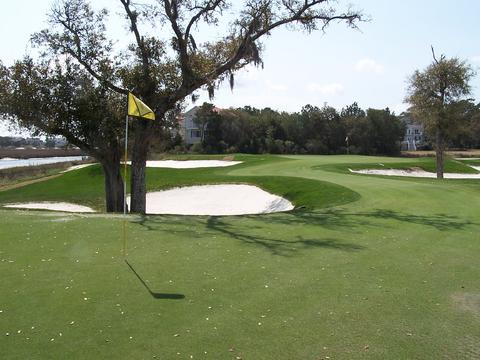
The Chapel Ridge Community near Chapel Hill, NC, is popular with families. Since Chapel Hill is a large city, schools can vary from one district to the next. Sites like Great Schools.net can help parents narrow the choices on where to live.
Yesterday we reviewed the real estate sites Trulia and Zillow. Today we offer a few more sites. Each should be taken with something of a grain of salt but might provide you with helpful information you won't find in community marketing brochures.
RottenNeighbor.com
A sage Greek once wrote that, "Those who plot the destruction of others fall themselves." This could be the unintended motto of RottenNeighbor.com whose raison d'etre is simple, but the consequences less so. Essentially, the site provides the ability to gore the ox of any of our neighbors who have offended us or, in our opinion, community sensibility. It also purports to warn the rest of us about the cantankerous old coot who could wind up as our next door neighbor.
Consider this RottenNeighbor posting by someone in Gulfport, MS: "The old man that lives here constantly stares at young women and gives lude (sic) remarks and gestures toward them. He waits until his wife/girlfriend is in the house and then starts staring. He is disgusting. If you're a young woman, don't live next to this guy. You won't get any sleep for fear of what he might do if he catches you before the door closes."
The letter writer's over-heated prose would make me leery about living next door to him (if it is a him). And who knows whether the allegations are true or not. Let's say, though, for the sake of argument, that the writer is being honest and helpful. If he owns his own home, by definition he has lowered its value by warning away potential buyers from buying next door. At best, this is both noble and stupid and at worst, if he is lying, nasty and destructive. No thank you; I'll spend my limited time on other sites.
StreetAdvisor.com
People stop and stare, they don't bother me,
For there's nowhere else on earth that I would
rather be.
Let the time go by, I won't care if I
Can be here on the street where you live.
-- from My Fair Lady
Equally self-serving, but from a prop-up-your-property value standpoint, is StreetAdvisor.com, another site that offers you the opportunity to praise your neighbors, or to bury them. But since the mission of the site is to advise, rather than to trash, the bias seems to be more toward objectivity.
"Try and write about things that you would want to know if you were moving into a new street," the site implores. "For example, what is the traffic like weekends? Is there a lot of social activity on the street? Are there a lot of dogs that bark at night?"
StreetAdvisor strikes us as a good idea, but it is limited, at this point, by the scarcity of messages from its users. I was invited to be the first one on my block at my Connecticut and South Carolina homes to offer some thoughts about life on the streets. StreetAdvisor posts scores for each street based on its users' ratings. I checked out the densely populated 1st Avenue in New York City where my wife and I once lived. It's nice rating of 88 (on a scale of 100) was the result of just one review, an indication that the site has not yet gained traction.
StreetAdvisor will eventually be useful but, for now, it will satisfy those with an inclination to praise or trash their neighborhoods, not those of us looking to move in.
GreatSchools.net
Okay, so you have raised your children and gotten them through public schools and college. Congratulations. Now, the last thing on your mind is the quality of the schools in a community you are considering a move to.
Not so fast. The quality of life and the stability of an area is often reflected in the quality of its schools, and while we would not put schools at the top of the list of criteria for a retired couple searching for a new place to live, we wouldn't discount it either.
GreatSchools is a simple, efficient way to check out the "report cards" on schools by zip code or town name. The site will help you find the best schools in a particular zip code and then compare them with other schools in other zip codes. This is particularly helpful in a spread-out city with multiple golf course communities and some variation in the quality of schools (such as Chapel Hill, NC, where some schools are near the best in the nation and others are below that level). GreatSchools will also search for top-rated schools by state.
For empty nesters, GreatSchools is a nice tool to have in assessing a particular area. For those with school-age children, it could prove invaluable.
























